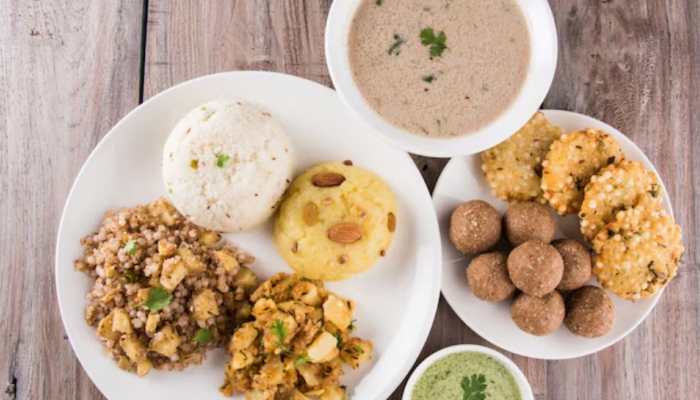Millet-Based Fasting Foods: A Modern Take On Traditional Vrat Meals
So, the next time you are preparing for a fast, try incorporating millet-based recipes into your meal planning – a small change with a big impact on your health!
Trending Photos
) Image credit: Freepik
Image credit: FreepikFasting has been an integral part of various cultures and religions, especially in India, where it is often linked to devotion, health, or spiritual growth. Among the many aspects of fasting, one of the most important considerations is food – the fasting meals must provide nourishment while adhering to the specific dietary restrictions of the fast. Traditionally, fasting meals often relied on grains like rice or wheat substitutes, but a growing interest in millet is changing the landscape of fasting cuisine.
Millets, once considered a humble grain, are making a strong comeback as a superfood, owing to their nutritional value and adaptability. With health-conscious individuals seeking gluten-free, low glycemic, and high-protein alternatives, millets are an ideal option for fasting meals. Not only do they offer a nutritious twist to traditional fasting foods, but they also bring a contemporary flair to time-honored recipes.
What Makes Millets Ideal for Fasting?
Millets, including varieties like finger millet (ragi), pearl millet (bajra), foxtail millet, barnyard millet, and kodo millet, are known for their impressive nutritional profile. They are rich in fiber, antioxidants, protein, and essential minerals like iron, magnesium, and calcium. These qualities make them a perfect food choice during a fast as they provide sustained energy, stabilize blood sugar levels, and aid in digestion without causing any unwanted spikes in glucose levels.
Since many millets are gluten-free, they are an excellent alternative for individuals with gluten sensitivity or those following specific diets. Millets also have a low glycemic index, making them a good choice for people with diabetes who want to maintain energy levels without sudden blood sugar fluctuations.
Traditional vs. Millet-Based Fasting Meals
Typically, during fasting, people restrict themselves to specific foods such as potatoes, yogurt, fruits, and certain grains, depending on the type of fast being observed. However, these foods can often become monotonous, and in many cases, lack essential nutrients. By incorporating millets, fasting meals can be revitalized with new flavors, textures, and enhanced nutritional content.
Let’s look at some traditional fasting dishes and their millet-based modern counterparts:
1. Kuttu (Buckwheat) and Sabudana (Sago) Khichdi:
Traditionally, fasting khichdi is made with buckwheat or sago. While both are light on the stomach and easy to digest, millets can replace these grains for a nutritious upgrade. For instance, barnyard millet khichdi is a great alternative, offering a similar texture and taste but with the added benefits of higher protein content and essential minerals.
2. Sago/Vrat Ke Dosa:
Sago dosa is a popular fasting meal often enjoyed for its crispy texture. Instead of using rice flour or semolina, you can substitute it with foxtail millet flour. This will not only add an earthy flavor but will also keep you full for a longer time, thanks to the high fiber content of millets.
3. Sabudana Khichdi:
This beloved dish, usually made with sago pearls, is light and refreshing, but millets offer a more sustainable alternative. Try making pearl millet (bajra) khichdi, using the same spices and vegetables, for a hearty and protein-rich fasting meal. Millets provide slow-releasing energy, which can prevent fatigue during fasting hours.
4. Vrat Ka Pulao:
Many fasting days call for a simple rice dish called "vrat ka pulao." A millet-based version of this dish can be made using foxtail millet or pearl millet instead of rice, paired with sautéed vegetables and mild spices. This variation has a delightful texture and a much higher nutritional value.
5. Millet Pancakes (Vrat ke Pancake):
Why not spice up your breakfast by swapping your regular pancake batter with millet flour? Ragi pancakes are a great option for fasting days, combining a nutty flavor and a delicious texture while offering a rich source of calcium and iron.
Health Benefits of Millet-Based Fasting Foods
Better Digestion and Gut Health: Millets are high in dietary fiber, which promotes healthy digestion. During fasting, it’s important to avoid digestive discomfort, and millets can help keep your system regulated.
Weight Management: Because millets are low in calories and high in fiber, they help keep you full for longer, reducing the likelihood of snacking or overeating during fasting. They also help in better satiety control, making them an excellent choice for those looking to manage weight.
Blood Sugar Control: Due to their low glycemic index, millets ensure that blood sugar levels remain stable. This is particularly important for those who fast regularly but are concerned about managing their glucose levels.
Increased Protein Content: Many millet varieties, especially finger millet (ragi), are packed with protein. Consuming a high-protein meal during fasting helps maintain muscle mass and promotes a feeling of fullness.
Rich in Micronutrients: Millets are packed with essential vitamins and minerals such as magnesium, iron, phosphorus, and potassium. These nutrients support overall health and wellness during fasting, especially during prolonged fasting periods.
How to Incorporate Millets into Your Fasting Menu?
Here are a few tips for using millets in fasting meals:
Breakfast: Start your day with a bowl of millet porridge. Cook millet with coconut milk or yogurt and add fruits and nuts to make it a wholesome meal.
Snacks: Millet-based snacks, like millet crackers or millet granola bars, are easy to prepare and carry, making them perfect for on-the-go fasting days.
Main Course: Millet can be used to prepare khichdi, pulao, or even millet-based curries with a variety of seasonal vegetables.
Breads: You can easily make millet-based rotis or parathas for a fulfilling meal that is both delicious and nutritious.
Millet-based fasting foods are a modern twist on traditional vrat meals, offering a perfect combination of nutrition, taste, and cultural significance. These ancient grains have the potential to revitalize fasting food traditions, providing an exciting alternative to monotonous fasting meals while boosting overall health.
By replacing rice or wheat-based foods with millets, you can enhance your fasting experience, providing your body with essential nutrients without compromising the sanctity of the fast. Whether you are a seasoned faster or someone new to fasting, adding millets to your diet will not only make your meals more interesting but will also give you the energy you need to sustain you through the day.
(This article is intended for your general information only. Zee News does not vouch for its accuracy or reliability.)
Stay informed on all the latest news, real-time breaking news updates, and follow all the important headlines in india news andworld News on Zee News.
Live Tv



)
)
)
)
)
)
)
)
)
)
)
)
)
)
